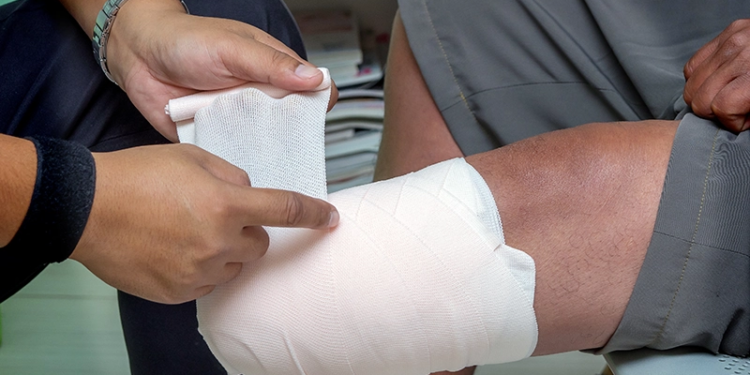To improve warfighters’ options for lower-limb prostheses, the Office of Naval Research is partnering with Walter Reed National Military Medical Center, Bethesda, Maryland; the Naval Research Laboratory, Washington DC; and several universities to develop Monitoring OsseoIntegrated Prostheses (MOIP), smart devices that are equipped with specially designed sensors to monitor gait, alert users to prosthetic wear and tear, and warn of potential infection risk.
Because osseointegrated prostheses have a risk of infection, MOIP will focus on infection detection, eradication, and prevention by developing electrochemical sense-and-respond approaches and smart skin technologies, including a biocompatible sensor array embedded within the user’s residual limb, coupled with more sensors on the prosthesis. The first technology of its kind, the array tracks changes in body temperature and pH balance, indicators of possible infection. It also monitors how well the bone and prosthetic limb fuse together and heal, allowing physicians to speed the recuperation process.

Jerome Lynch, right, discusses the results of an experiment with a U-M research fellow.
Photograph courtesy of Joseph Xu, U.S. Navy
“One game-changing application of this technology would be as a tool to inform doctors when prosthetics can be safely loaded after surgery, leading to more accurate determination of when patients are ready for physical therapy after receiving a new prosthetic,” said Jerome Lynch, MD, PhD, a University of Michigan (U-M) engineering professor who is overseeing the sensor array’s development. “Because the sensors transmit information wirelessly, doctors also could potentially study patient data via a handheld reader. Think of it as an extremely specialized Fitbit. This could dramatically improve the recovery and long-term quality of life for patients.”
Lynch and his team successfully created a MOIP sensor array prototype using osseointegrated prostheses and synthetic bone models manufactured at U-M. While this prototype was successful in laboratory tests, the team hopes to have a new, improved model ready for clinical trials early next year.
Editor’s note: This story was adapted from materials provided by the Office of Naval Research.




